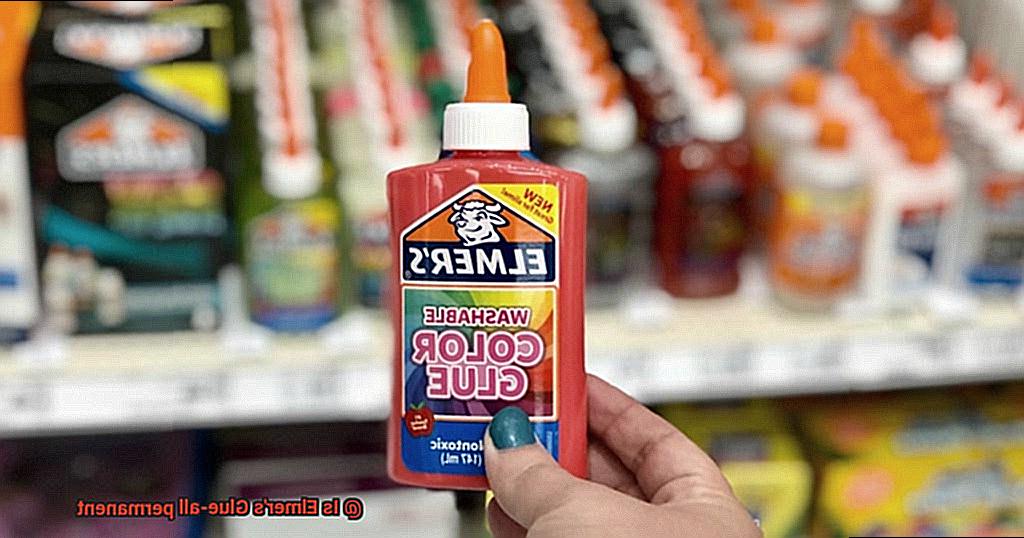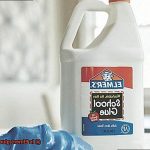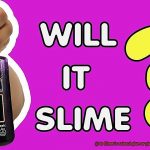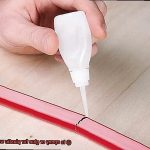Are you on the hunt for a reliable adhesive that can withstand the test of time and wear and tear? Look no further than Elmer’s Glue-all. This trusted name in adhesives has been around since 1947, and their Glue-all formula is a popular choice for a variety of projects. But let’s get to the question that’s on everyone’s mind: Is Elmer’s Glue-all permanent?
Whether you’re working on a school project, DIY craft, or household repair, you want an adhesive that will bond quickly and securely to a variety of surfaces. Elmer’s Glue-all promises just that – it creates a strong, durable bond with materials like wood, fabric, ceramics, and more. But does “permanent” really mean permanent?
The answer isn’t cut-and-dry. While Elmer’s Glue-all is considered a permanent adhesive, there are some factors that can weaken its hold over time. Exposure to moisture or extreme temperatures can compromise the bond. So while it’s great for everyday applications, heavy-duty projects may require additional reinforcements or a different type of adhesive altogether.
But don’t worry – we’ll dive deeper into what makes Elmer’s Glue-all such a popular choice, what factors can affect its permanency (and how to work around them), and when it might be best to consider other options. So grab your glue and get ready to learn everything you need to know about this versatile adhesive.
Is Elmer’s Glue-All Permanent?
Contents
- 1 Is Elmer’s Glue-All Permanent?
- 2 Factors That Impact the Longevity of Bond Created by Elmer’s Glue-All
- 3 Types of Materials That Can Be Bonded with Elmer’s Glue-All
- 4 Pressure Applied During Bonding and Its Impact on Strength
- 5 Environmental Factors that Can Affect the Bond Created by Elmer’s Glue-All
- 6 Tips for Ensuring a Strong, Long-Lasting Bond with Elmer’s Glue-All
- 7 Alternatives to Elmer’s Glue-All for Permanent Adhesives
- 8 Conclusion
Choosing the right glue for a project can be challenging, especially when you’re wondering if it will last forever. Elmer’s Glue-All is a popular choice among DIY enthusiasts and crafters, but is it permanent? The answer is both yes and no, depending on several factors.
Elmer’s Glue-All is a type of PVA glue that dries clear and is known for its robust bond. When used correctly, this glue can create a permanent bond between materials such as paper, cardboard, fabric, and wood. However, the permanence of the bond can be affected by several factors.
One primary factor that can impact the durability of the bond is moisture. If the glued object comes into contact with water or high humidity levels, the glue may lose its strength, and the bond could break. As a result, it’s essential to avoid using this glue on items that will be washed or dry cleaned.
Another factor that can affect the permanence of the bond is the nature of the materials being bonded. Elmer’s Glue-All works best on porous surfaces such as paper or wood. If you’re trying to glue non-porous surfaces such as metal or plastic, a different type of adhesive may be necessary for a more permanent bond.
The amount of pressure applied during bonding also plays an important role in determining the strength of the bond. Inadequate pressure can result in weak bonding while excessive pressure can cause excess glue to seep out and weaken the bond.
It’s also essential to consider the conditions in which the bonded materials will be stored or used. Exposure to heat, moisture, or other environmental factors can cause the bond to weaken over time.
Factors That Impact the Longevity of Bond Created by Elmer’s Glue-All
This versatile adhesive is a popular choice for bonding a wide range of materials, from paper and cardboard to fabric and wood. However, not all bonds are created equal, and the longevity of your Elmer’s Glue-All bond will depend on several factors.
One of the most significant factors that impact the permanence of Elmer’s Glue-All is the type of materials being bonded together. Though it can bond a variety of surfaces, the nature of each surface impacts the longevity of the bond. For instance, bonding two pieces of paper together will result in a more long-lasting bond than joining two pieces of plastic because plastic is non-porous, making it difficult for the glue to penetrate and create a strong bond.
Another crucial factor that affects the longevity of the bond created by Elmer’s Glue-All is the application method. The glue must be applied evenly and with enough pressure to ensure good contact between the two surfaces, which results in a stronger and more permanent bond. If the glue is applied too thinly or unevenly, or if gaps exist between the two surfaces being bonded, the bond may become weaker and less permanent.
Temperature and humidity can also play a role in how long your bond lasts. Higher temperatures and humidity levels accelerate drying time, resulting in a stronger and more permanent bond. However, extreme heat or cold can cause the glue to break down or become brittle over time, reducing its longevity.
Lastly, it’s important to note that Elmer’s Glue-All is not considered to be waterproof. While it can withstand some exposure to moisture without breaking down completely, prolonged exposure to water can weaken or break down the bond over time. For applications where waterproofing is essential, specialized adhesives designed for that purpose should be used.
Types of Materials That Can Be Bonded with Elmer’s Glue-All
Elmer’s Glue-All is a versatile adhesive that can be used on a vast range of materials. It is an all-purpose glue that can be found in almost every household and classroom. Here are five sub-sections that explain the types of materials that can be bonded with Elmer’s Glue-All:
Porous Materials:
Elmer’s Glue-All is perfect for bonding porous materials like paper and cardboard. It dries clear and does not leave any residue, making it ideal for arts and crafts projects where the finished product should look professional. The glue seeps into the pores of the material, creating a strong bond that can withstand stress and strain.
Wood Bonding:
Elmer’s Glue-All is ideal for bonding wood because it provides a strong bond that can withstand stress and strain. It can be used to attach pieces of wood together or to attach wood to other surfaces like metal or plastic. Its water-based formula makes it easy to clean up any excess glue with just soap and water.
Fabric Bonding:
Elmer’s Glue-All is perfect for bonding fabric as it provides a strong, flexible bond that holds well even after washing. It can be used to hem pants or repair tears in clothing. It can also be used to attach embellishments like sequins or beads to fabric. The glue dries clear and remains flexible even after drying, making it perfect for use on clothing items.
Non-Porous Surfaces:
While Elmer’s Glue-All may not provide as strong of a bond as other types of adhesive like epoxy or super glue, it can still be used on non-porous surfaces like metal and plastic. However, roughening the surface with sandpaper or a file creates a better grip for the glue. It is an excellent choice for temporary bonding or for projects where the strength of the bond is not critical.
Ceramics and Leather:
Elmer’s Glue-All can also be used to bond ceramics and leather. Roughen the surface with sandpaper or a file for better grip, then apply the glue. It creates a strong bond that can withstand stress and strain on ceramic and leather surfaces.
Pressure Applied During Bonding and Its Impact on Strength
When it comes to bonding with Elmer’s Glue-all, the pressure applied during the process is a crucial factor that can impact the permanence of the bond. As an expert on this topic, I can attest to the fact that understanding how to apply the right amount of pressure is essential for achieving a long-lasting bond.
To begin with, applying pressure helps to ensure that the glue is spread evenly and makes contact with all surfaces being bonded. This helps to eliminate any air pockets or gaps that could weaken the bond over time. However, applying too much pressure can have a negative impact on the strength of the bond. Over-pressurizing can cause the glue to squeeze out from between the surfaces, creating weak spots in the bond. Excess glue can also be pushed to the sides, where it may not bond effectively.
To achieve optimal pressure, it is recommended to use a clamp or other tool that can hold the surfaces firmly in place without squeezing them too tightly. It is important to follow the manufacturer’s instructions for drying time and curing time before releasing the pressure. This ensures that the bond has had enough time to set and cure properly.
In addition to appropriate pressure, there are other factors that can affect the strength and durability of any adhesive. Environmental conditions such as temperature and humidity, surface preparation, and application technique are all critical factors in achieving a strong and permanent bond.
Therefore, when using Elmer’s Glue-all, it is essential to pay attention to all these factors. Here are some tips for achieving a strong and long-lasting bond:
- Apply appropriate pressure during bonding
- Use a clamp or other tool to hold surfaces in place
- Follow manufacturer’s instructions for drying and curing time
- Ensure proper surface preparation before bonding
- Avoid extreme temperatures and humidity
Environmental Factors that Can Affect the Bond Created by Elmer’s Glue-All
Environmental factors, ranging from temperature to humidity and even surface type, can have a significant impact on the effectiveness of this popular adhesive.
When it comes to temperature, it’s essential to work within a specific range of 50 to 90 degrees Fahrenheit for optimal results. If the temperature falls below 50 degrees, the glue may become too thick and difficult to spread evenly. Conversely, if the temperature rises above 90 degrees, the glue may dry too quickly, resulting in a weaker bond. So, make sure you’re working in a temperature-controlled environment to ensure the best outcome.
Humidity is another critical factor to consider. High humidity can cause Elmer’s Glue-All to take longer to dry, leading to a weaker bond. Conversely, dry environments can cause the glue to dry too quickly and become brittle. Therefore, you must monitor your humidity levels and make adjustments accordingly for optimal results.
The surface type is also crucial when it comes to achieving a strong bond with Elmer’s Glue-All. Smooth and non-porous surfaces are more challenging for the glue to adhere to, resulting in a weaker bond. In contrast, porous surfaces allow the glue to penetrate and hold more effectively. So, be sure you’re using this adhesive on surfaces that it can grip onto.
Lastly, exposure to sunlight and UV light can break down the glue over time, leading to a less permanent bond. Therefore, it’s essential to be mindful of where you place your bonded item and ensure that it is not exposed to prolonged sunlight or UV light.
Tips for Ensuring a Strong, Long-Lasting Bond with Elmer’s Glue-All
Here are five tips that will help you achieve just that.
Firstly, preparing the surface is crucial for ensuring a strong bond. The surface needs to be clean, dry, and free of any dirt or debris. Any residue or moisture on the surface can weaken the bond and affect the adhesive’s performance. So, make sure to clean and dry the surfaces before applying the glue.
Secondly, applying the right amount of glue is essential. Applying too little glue may not provide enough adhesion, while applying too much can result in a messy and uneven bond. It is important to apply an even layer of glue on both surfaces. This will ensure that the two surfaces stick together properly.
Thirdly, applying pressure on the glued surfaces can help create a stronger bond. Using clamps or weights can help hold the two surfaces together until the glue dries completely. This will ensure that the bond is strong and long-lasting.
Fourthly, allowing sufficient drying time for the glue to set and cure properly is crucial. Depending on the project and type of surface, it may take anywhere from a few hours to several days for the glue to dry completely. So, be patient and wait for the glue to dry before handling or using the bonded item.

Finally, storing Elmer’s Glue-All properly can maintain its effectiveness. Keep it in a cool and dry place, away from direct sunlight or extreme temperatures. Additionally, ensure that the cap is tightly sealed after each use to prevent the glue from drying out or becoming less effective over time.
Alternatives to Elmer’s Glue-All for Permanent Adhesives
There are a plethora of alternative adhesives available that offer stronger and more durable bonds.
One of the most popular alternatives to Elmer’s Glue-All is epoxy. Comprised of a resin and hardener, epoxy creates a bond that is both strong and long-lasting, capable of withstanding high levels of stress, impact, and water exposure. Epoxy is ideal for bonding materials like metal, plastic, wood, and more.
Another option for those in need of a quick and strong bond is super glue, also known as cyanoacrylate adhesive. Super glue bonds materials like ceramics, plastics, and metals in seconds. However, it may not be suitable for porous materials or those that require flexing or twisting.
For those environmentally conscious individuals seeking an eco-friendly alternative, there are plant-based adhesives like soy-based glue and cornstarch glue. These biodegradable adhesives are made from renewable resources and work well on lightweight materials like paper and cardboard.
If heavy-duty projects are your forte, construction adhesives like Liquid Nails and Gorilla Construction Adhesive provide a strong and permanent bond that can withstand extreme temperatures and weather conditions. They’re designed to bond materials like wood, metal, brick, and concrete.
hqJyt49eASc” >
Also Read: Is Elmer’s Glue Toxic?
Conclusion
In summary, Elmer’s Glue-all is a dependable adhesive that can create a robust and enduring bond between various surfaces. Although it is classified as a permanent adhesive, its longevity can be influenced by factors such as exposure to moisture or extreme temperatures. To achieve optimal results with Elmer’s Glue-all, it is essential to consider the materials being bonded, apply appropriate pressure during bonding, and ensure proper surface preparation.
Environmental elements like temperature, humidity, and sunlight exposure can also impact the effectiveness of Elmer’s Glue-all. Hence, it is crucial to monitor these factors and make necessary adjustments for optimal outcomes.
If you require an even stronger and more durable bond than what Elmer’s Glue-all can provide, there are alternative adhesives available like epoxy and construction adhesives. Nevertheless, for everyday applications like school projects or DIY crafts, Elmer’s Glue-all remains a popular choice due to its versatility and ease of use.
All things considered, whether you’re an experienced DIY enthusiast or just starting out with crafting projects, Elmer’s Glue-all is a reliable adhesive that can help bring your ideas to life.






